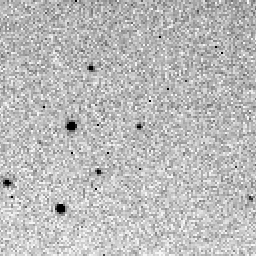Fifth asteroid ever discovered before impact
In brief
Most asteroids that have impacted Earth were discovered many years, often many millions of years, after the event. The evidence? Roughly 200 known craters scar Earth’s surface, telling an impactful story of how our planet, and life on it, has been dramatically shaped by violent collisions with ancient space rocks. On occasion – five in human history, to be precise – we discover an asteroid before it strikes.
In-depth
Warning of certain impact

At 19:24 UTC on 11 March 2022, astronomer Krisztián Sárneczky discovered a bright and fast-moving new object in the sky using the 60cm Schmidt telescope at the Piszkéstető observatory, Hungary. He collected four observations in quick succession, and just 14 minutes later reported his findings to the Minor Planet Center (MPC), initially designating the object ‘Sar2593’.
The results were quickly published and used by automatic impact assessment systems around the world to estimate the possibility of an impact: at the time, it seemed unlikely, at less than 1%.

Krisztián continued to observe the object, making a further 10 observations soon after the discovery and again submitting them to the MPC. These, however, resulted in an entirely different scenario. Almost exactly an hour after it was detected at 20:25 UTC, ESA’s “Meerkat” monitoring system triggered an alert to the Agency’s Near-Earth Object Coordination Centre (NEOCC) based on the accumulated observations.
The chance of impact was now 100%, and would happen in less than an hour, sometime between 21:21 and 21:25 UTC. The new object’s impact location was already predictable to the nearest thousand kilometres, expected just a few hundred kilometres north of Iceland.
Rapid response to a speedy space rock
In response to ESA’s Meerkat alert and others like it, professional and amateur observers across Europe and Asia quickly started to observe the imminent impactor. Finding it was extremely challenging since the object was already very close (about 1/7th the distance to the Moon) and moving rapidly in the sky.

Another observatory – Kysuce, Slovakia – soon reported its successful observations, together with many more detections from the original discoverer. With this new data added to the mix, the location of the asteroid impact could be pinpointed even more precisely: the asteroid was going to enter the upper layers of our atmosphere roughly 140 km south of the Jan Mayen island at 21:22:42 UTC – less than two hours after being discovered.
From its observed brightness, the object appeared to be very small. At roughly a metre in diameter it posed no threat to Earth, as at this size it would entirely burn up in Earth’s atmosphere.
Shortly after the expected time of impact the Minor Planet Center designated the asteroid the title “2022 EB5”, becoming just the fifth known impactor observed in space before hitting our planet, and the first discovered from Europe.

Unfortunately, no conclusive visual or video detections of the corresponding fireball have been located at present, likely due to the remoteness of the impact location.
Nevertheless, there is independent evidence that the impact did in fact occur thanks to the international network of infrasound detectors. Signals from the impact were detected from Iceland and Greenland, suggesting an energy release equivalent to roughly a magnitude 4.0 earthquake.
Why only the fifth?
It is estimated that between 40 and 100 tonnes of space material strike Earth every day, most in the form of very small particles. Larger objects, similar in size to 2022 EB5 are expected to strike roughly ten times per year. So why have only five asteroids been detected before impact?

The news here is rather positive. Large asteroids, kilometres in diameter, are easier to spot. Although they could do immense damage, they are thankfully relatively rare. We now know where the vast majority of these are and can say for certain that they are safe, atleast for the next hundred years. The international community continues to seek out every last one.
Smaller asteroids are far more common and strike Earth much more frequently, but their impact is small and they’re much harder to spot. All five asteroids, spotted before impact, were found since 2008, illustrating how much asteroid observation technologies have improved in the last years.
Many more to come
More dedicated sky scanning telescopes are in the pipeline, including ESA’s first state-of-the-art Flyeye telescope soon to be constructed in Monte Mufara, Italy. The new, European telescope will split each image into 16 smaller subimages, expanding its overall field of view – similar to the technique exploited by a fly’s compound eye.

“The extremely wide field of the new telescopes will allow us to cover a large area of the sky in just one night," says Detlef Koschny, ESA’s (now former) acting Head of Planetary Defence.
"This will reduce the chance that we miss any interesting object."
As our ability to predict asteroid impacts improves, so will our preparation. For medium-sized impacts that can create airbursts in the sky, this means the chance to warn people to stay away from windows that could break in the explosion. For larger objects, this means having the chance to prepare asteroid deflection missions to prevent impact altogether.















 Germany
Germany
 Austria
Austria
 Belgium
Belgium
 Denmark
Denmark
 Spain
Spain
 Estonia
Estonia
 Finland
Finland
 France
France
 Greece
Greece
 Hungary
Hungary
 Ireland
Ireland
 Italy
Italy
 Luxembourg
Luxembourg
 Norway
Norway
 The Netherlands
The Netherlands
 Poland
Poland
 Portugal
Portugal
 Czechia
Czechia
 Romania
Romania
 United Kingdom
United Kingdom
 Slovenia
Slovenia
 Sweden
Sweden
 Switzerland
Switzerland





































